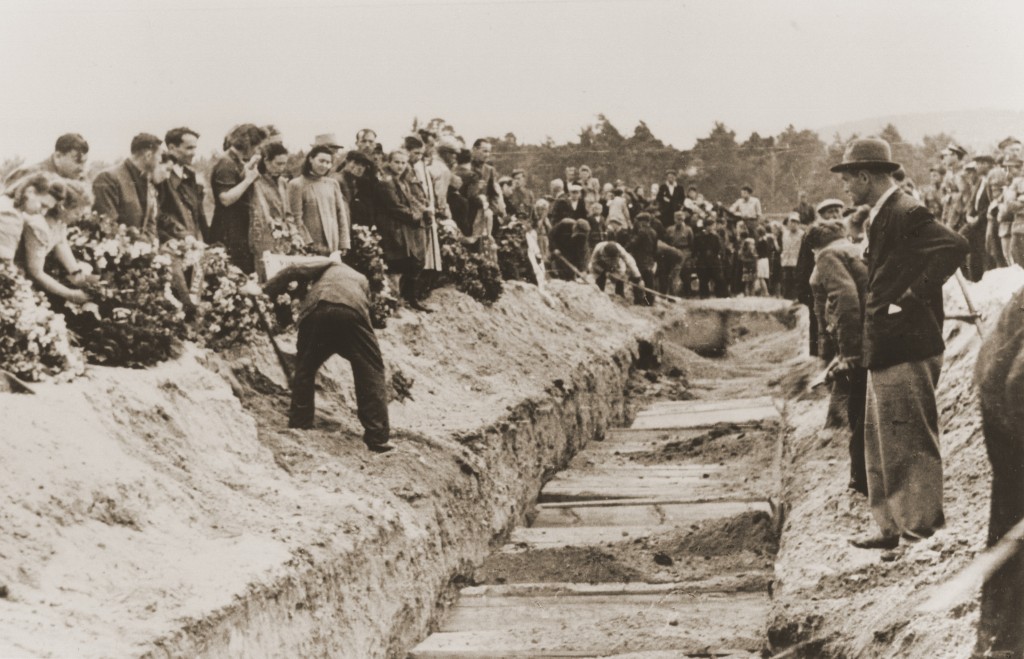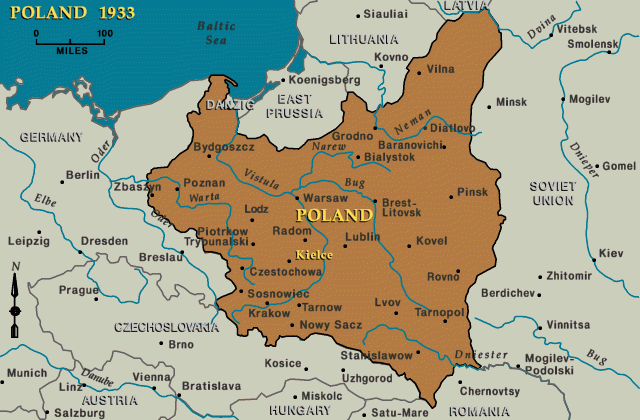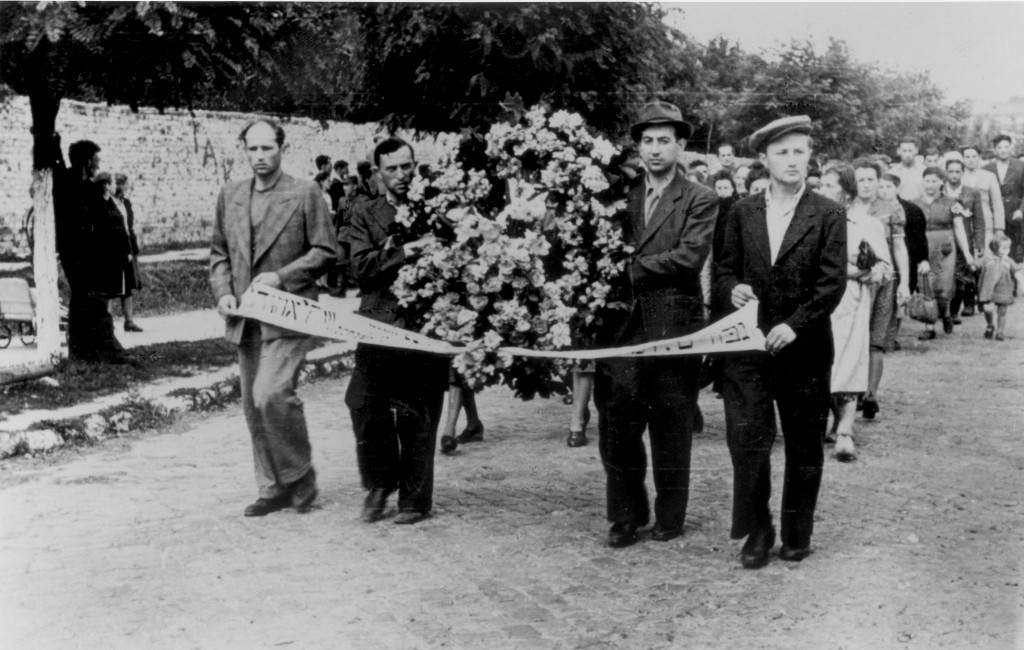
The Kielce Pogrom: A Blood Libel Massacre of Holocaust Survivors
The term Kielce pogrom refers to a violent massacre of Jews in the southeastern Polish town of Kielce on July 4, 1946.
Introduction
Pogrom is a Russian word meaning “to wreak havoc, to demolish violently.” Historically, the term refers to violent attacks by local non-Jewish populations on Jews in the Russian Empire. During the Kielce incident, a mob of Polish soldiers, police officers, and civilians murdered at least 42 Jews and injured over 40 in the worst outburst of anti-Jewish violence in postwar Poland.
The mass violence of the Kielce pogrom drew on an entrenched local history of antisemitism—especially false allegations accusing Jews of using the blood of Christian children for ritual purposes (a charge known as a “blood libel”)—with the intent of discouraging the return of Jewish Holocaust survivors to Poland. While the pogrom was not an isolated instance of anti-Jewish violence in postwar Poland, the Kielce massacre convinced many Polish Jews that they had no future in Poland after the Holocaust and spurred them to flee the country. Coming just one year after the end of World War II, the massacre shocked people around the world.

In 1939 there were approximately 24,000 Jewish inhabitants in Kielce or one-third of the town's population. Almost all of them were murdered during the Holocaust. By the summer of 1946, about 200 Holocaust survivors had returned to or settled in Kielce. A minority were able to reclaim some property which had been confiscated by non-Jews during the German occupation.
The Pogrom
On July 1, 1946, a nine-year-old non-Jewish boy, Henryk Blaszczyk, left his home in Kielce, without informing his parents. When he returned on July 3, the boy told his parents and the police, in an effort to avoid punishment for wandering off, that he had been kidnapped and hidden in the basement of the local Jewish Committee building on 7 Planty Street. The Committee building sheltered up to 180 Jews, and housed various Jewish institutions operating in Kielce at the time. The local police went to investigate the alleged crime in the building, and even though Henryk's story began to unravel (the building, for example, had no basement), a large crowd of angry Poles, including one thousand workers from the Ludwikow steel mill, gathered outside the building.
Polish soldiers and policemen entered the building and called upon the Jewish residents to surrender any weapons. After an unidentified individual fired a shot, officials and civilians fired upon the Jews inside the building, killing some of them. Outside, the angry crowd viciously beat Jews fleeing the shooting, or driven onto the street by the attackers, killing some of them. By day's end, civilians, soldiers and police had killed 42 Jews and injured 40 others. Two non-Jewish Poles died as well, killed either by Jewish residents inside the building or by fellow non-Jewish Poles for offering aid to the Jewish victims.
After the Pogrom

Three days after the pogrom, surviving Jews and local residents buried the victims in a mass grave in the Jewish cemetery. Government authorities ordered military units and local residents to attend the funeral as a sign of respect for the victims. Although the government executed nine of the attackers on July 14, following a hasty judicial investigation, the Kielce Pogrom sparked intense fear in the already traumatized postwar Polish Jewish community.
In September and October 1946, Polish authorities in Kielce indicted civilians, soldiers and police officers for their participation in the pogrom and complicity in the killings. Among the defendants were the commander of the Kielce Office of the Security Service, Major Wladyslaw Sobczynski, and the Chief of Police, Colonel Wiktor Kuznicki, as well as his deputy, Major Kazimierz Gwiazdowicz; of the three, only Kuznicki received a one year sentence, while the other two were acquitted.
The Kielce pogrom became a symbol of the precarious state of Jewish life in Eastern Europe in the immediate aftermath of the Holocaust.
Critical Thinking Questions
What challenges immediately faced survivors of the Holocaust? What was the range of experiences?
How have populations dealt with the aftermath of mass atrocity?

